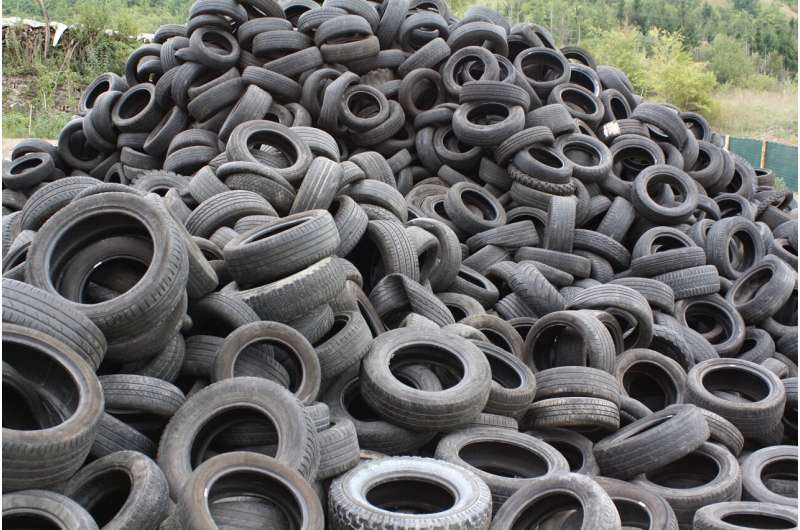
Thermal decomposition is helping to green two major EU manufacturing industries.
For thousands of years, humans have converted wood into charcoal through a technique called pyrolysis. Now, Jean-Michel Douarre wants to use this age-old method for a modern purpose: turning old car tires into new ones.
Douarre, the head of research into sustainable materials at French tire maker Michelin, hopes pyrolysis will put his industry on a greener footing.
Clean carbon
Tires, which are made of rubber and petrochemicals, contain a lot of carbon. And producing tires currently involves fossil-fuel burning that releases greenhouse gases into the atmosphere.
Pyrolysis is the high-temperature breakdown of materials without oxygen and, unlike incineration, uses thermal decomposition to convert them for reuse.
Scientists have learned how to harness this technique to make fuels, chemicals and materials from carbon-rich waste as well as from renewable biomass. And it fits perfectly into the EU's goal of a circular economy involving more recycling and less waste.
"In Europe, most end-of-life tires are collected, which is a good thing, but almost none of them are used to make raw materials for new tires," Douarre said.
He leads a research project that shows pyrolysis can turn old tires into a clean version of carbon black, a major tire ingredient.
This carbon-rich substance makes up 20% to 30% of an average tire and is usually derived from fossil fuels including oil. Carbon black gives the tires their color, prevents damage from ultraviolet light and helps make them durable.
Called BlackCycle, the four-year project run by Douarre is due to wrap up in June 2024.
Pyrolysis generates three products: a liquid, solid and gas. By adjusting the pyrolysis chamber's conditions—such as temperature and speed of heating—it's possible to control the amount and chemical composition of these products.
The BlackCycle team has found that it can tweak the process to generate large quantities of oil from the pyrolysis of old tires. The researchers used this oil, which is chemically similar to the fossil-fuel kind, to produce a high-quality type of carbon black.
"We produced several tons of carbon black," Douarre said.
Rolling on
The researchers have since used this carbon black to make a bus tire, which was tested for use on roads.
The prototype was found to have rolling resistance, levels of durability and other characteristics comparable with current tires.
But it's not just carbon black being produced.
"What we want to do in the recycling process is use everything that we produce," Douarre said.
For instance, the gas created by the pyrolysis of the tires is used as fuel to power the whole process, while any oil that isn't converted into carbon black can be used to make resins.
The hope is that, in the future, these too can be used in new tires.
Valuable waste
Europe generates around 3.5 million tons of used car tires a year, according to the European Tire and Rubber Manufacturers' Association.
At least 90% of these end-of-life tires are reused in some way. About 40% are incinerated for energy production and around half are recycled.
Most recycled tire waste—70%—is ground down to produce rubber granules and powder, with much of this becoming artificial sports pitches and playground flooring.
The rest is incorporated into cement or used for civil engineering projects. For instance, whole tires can be used to build coastal erosion barriers while shredded tires are used in foundations for roads and railways.
Nonetheless, researchers and tire manufacturers are keen to produce higher-value products from tire waste.
Michelin, the world's biggest manufacturer of tires, wants to replace all raw materials in its products with sustainable substances by 2050, according to Douarre.
"Recycling tires is one of the ways to do this," he said.
Tires are a major source of microplastics pollution worldwide. The Pew Charitable Trusts said in a 2020 report that tire particles were responsible for almost four-fifths of microplastics in oceans.
Citation: Recycling tires and plastics with an ancient heating method (2024, January 30) retrieved 30 January 2024 from https://techxplore.com/news/2024-01-recycling-plastics-ancient-method.html
This document is subject to copyright. Apart from any fair dealing for the purpose of private study or research, no part may be reproduced without the written permission. The content is provided for information purposes only.
